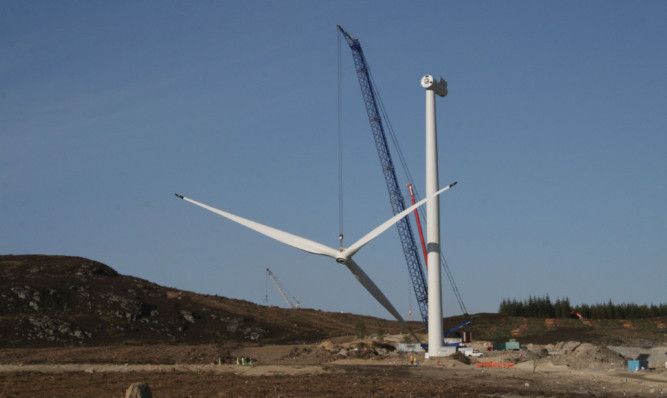A major windfarm project has been rejected by councillors following a considerable backlash from residents.
Renewable specialists Force 9 Energy had proposed to install 13 turbines at land near Aberfeldy, close to the massive SSE-operated Griffin development.
The planning bid for the multi-million-pound Creag a’ Bhaird scheme came up against widespread opposition from locals, community councils and conservation groups, however.
Perth and Kinross Council received nearly 100 letters and emails calling for the plan for land near a popular tourist trail to be scrapped.
Now members of the development management committee have unanimously ruled against the scheme, on the basis that it would have a detrimental impact on the surrounding area.
Opponents argued the turbines would be noisy, unsightly and could lead to a downturn in tourist numbers.
They pointed out that, when the much larger Griffin development was approved, four of its turbines were removed to limit the impact on nearest residents.
Objector John Anderson, who lives less than a mile from the site, said Force 9’s plan would reintroduce those missing masts and many more.
“This would be one of the most intrusive windfarms on a viable rural community I have ever seen,” he said.
Andrew Smith, of Force 9, addressed the committee and argued that planning officers who had prepared a report on the project had “overstated its environmental impact” and called for their comments to be disregarded.
When asked if felling trees to clear the area for Creag a’ Bhaird would make Griffin more visible, he said that the trees were part of a commercial operation and would be felled anyway.
Mr Smith said it was significant that Scottish Natural Heritage (SNH) had not made a formal objection to the plan.
Councillor John Kellas said: “We have fought hard to preserve this tourist route, which is in a very attractive part of Perthshire.
“We need to continue to do so and stop it turning into an industrialised zone.”
In his report, which was agreed by the committee, development quality manager Nick Brian states: “The windfarm has a significant and unacceptable visual impact on residential, recreational and tourist receptors.”
Objector Nan Johnston, who spoke to the committee on behalf of protesters in Dunkeld and Birnam, said she was pleased with the decision and hoped Force 9 would not appeal it.
“Although there may be some short-term construction jobs created, they will not compensate for the potential loss of long-term employment due to the adverse impact windfarm developments are having on local businesses,” she said.
“For example, increased HGV traffic is preventing clients and/or deliveries reaching business premises in a timely manner.”
She added that the turbines may have led to a downturn in trade for guesthouse owners and holiday accommodation providers, who rely on tourism.
Details of the scheme were first revealed at a series of public consultation meetings two years ago.
Among its opponents is the Perth-based John Muir Trust, which campaigns to preserve Scotland’s wild land.
A spokesman said: “We are seriously concerned that the proposed development, if approved, would be visually intrusive and significantly and adversely impact on this wild landscape.
“Highland Perthshire in general, and Aberfeldy and Dunkeld in particular, rely very heavily on tourism for employment and this should not be put at further risk.”
